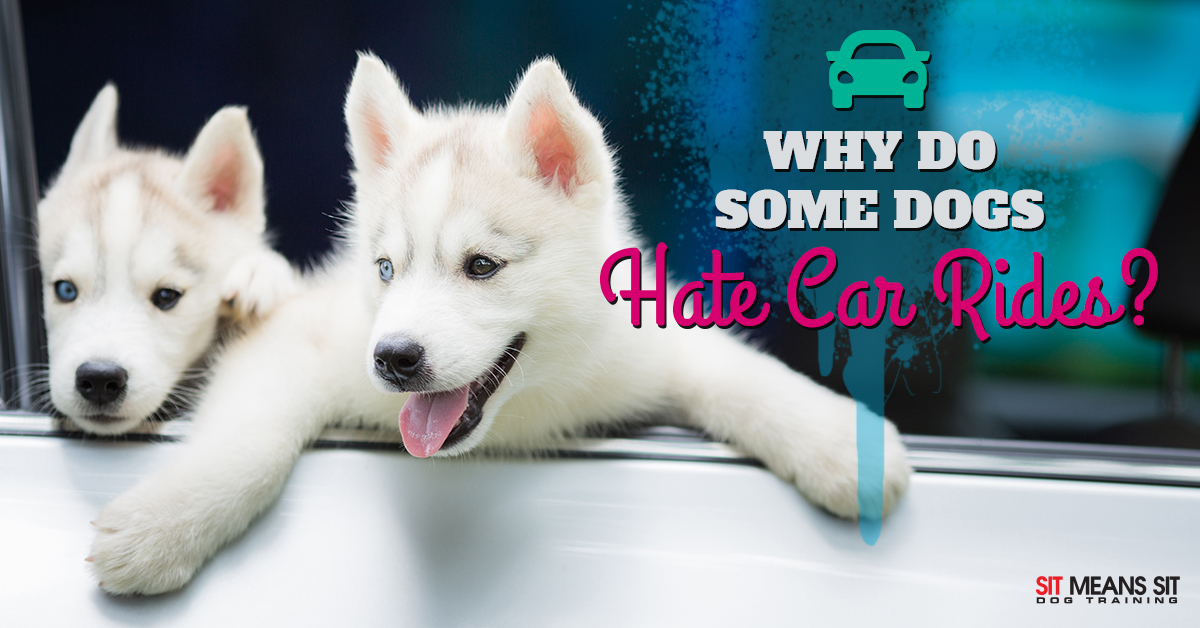
Why Does My Dog Hate the Car?
If you’re dog dreads getting into the car and hates going on car rides, then they’re most likely suffering from motion sickness, anxiety, or a combination of both.
Motion Sickness & Symptoms to Look Out For
Puppies and young dogs tend to be more prone to motion sickness since the part of their ear that manages balance hasn’t fully developed yet, and the motion of the car can make them feel more off-balanced than adult dogs typically do. This off-balanced sensation can then lead them to feel nauseous and possibly vomit. Most puppies outgrow motion sickness after about a year, but some dogs continue to suffer from motion sickness into their adulthood.
No matter if your pooch is a puppy, adult, or a senior dog, knowing the signs of motion sickness can help you better manage it. A carsick canine will most likely display some of these symptoms:
- Lethargy
- Repeated yawning
- Whining
- Panting
- Lip-licking
- Excessive drooling
- Uneasiness
- Unusual stillness
- Vomiting
Panting tends to be the most common sign of motion sickness in dogs because it’s actually a coping mechanism dogs use to deal with discomfort ranging from carsickness to overheating. When you notice panting combined with lip-licking or smacking, this could be a tell that your pooch is feeling nauseated. If this occurs, it’s best to pull over and go on a short walk to help their stomach settle, hopefully.
Travel Anxiety
Usually, when an adult dog hates car rides, it’s due to anxiety rather than physical discomfort. The anxiety that they associate with car rides probably stems from when they were young. If your furry friend experienced terrible motion sickness, they could continue to associate that discomfort with car rides even when they reach adulthood and aren’t experiencing motion sickness anymore. There are also dogs who hate car rides because they associate them with going to the veterinarian’s office, which is likely the reason if they only ever get in the car to go to an appointment. If Fido has had other negative experiences during or immediately after car rides, this could also be the reason they get so anxious – they might associate negative events with the car. Luckily, with positive association training exercises, there’s a significant chance you can change the fear they associate with vehicles.
Carsickness and Travel Anxiety Can Sometimes Look Similar
Several signs of carsickness like drooling, whining, yawning, panting, and the inability to settle can also be indicators of anxiety. Sometimes the sickness a dog experiences in the car can be due to the anxiety they associate with car rides. A canine with car anxiety will typically display the symptoms mentioned, but they also might start barking when you’re getting them ready for the car ride, try to hide to avoid going, or even pull against their leash in the opposite direction of the vehicle. Once again, training your pooch to have positive associations with car rides can help condition them to feel more at ease during them.
If your pup hates car rides, traveling with them can be a burden. But by taking steps to acclimate Fido to car rides and creating a positive association with them through training, you can eventually help your dog feel more comfortable when getting into a vehicle
